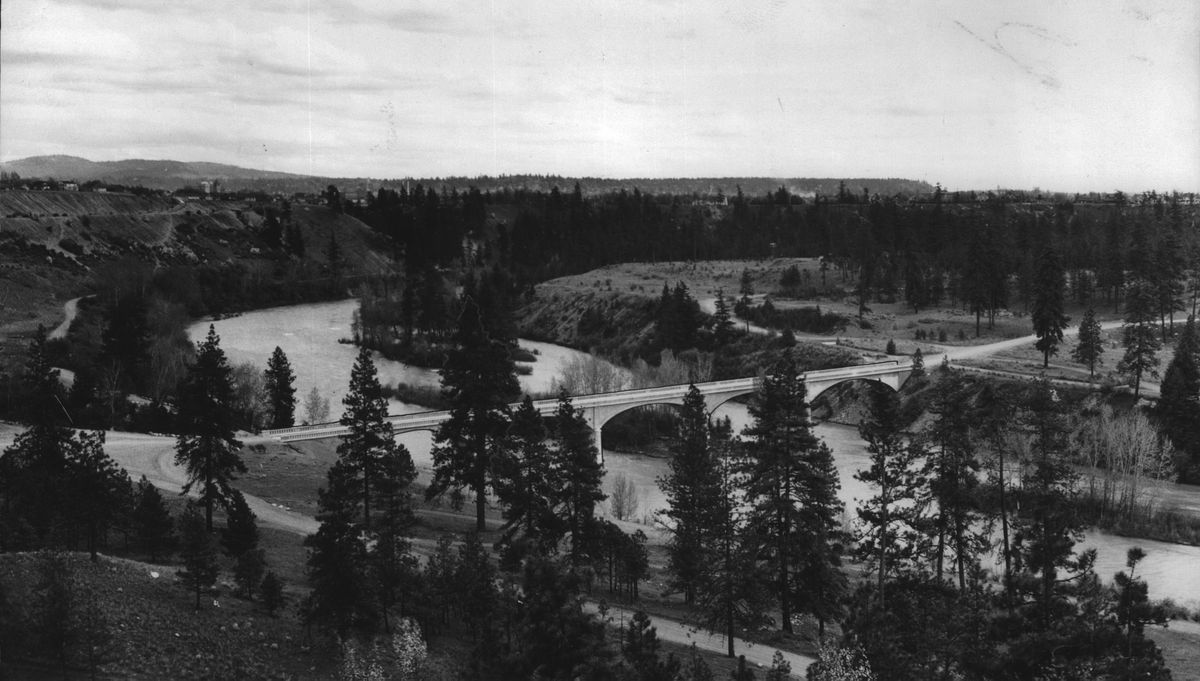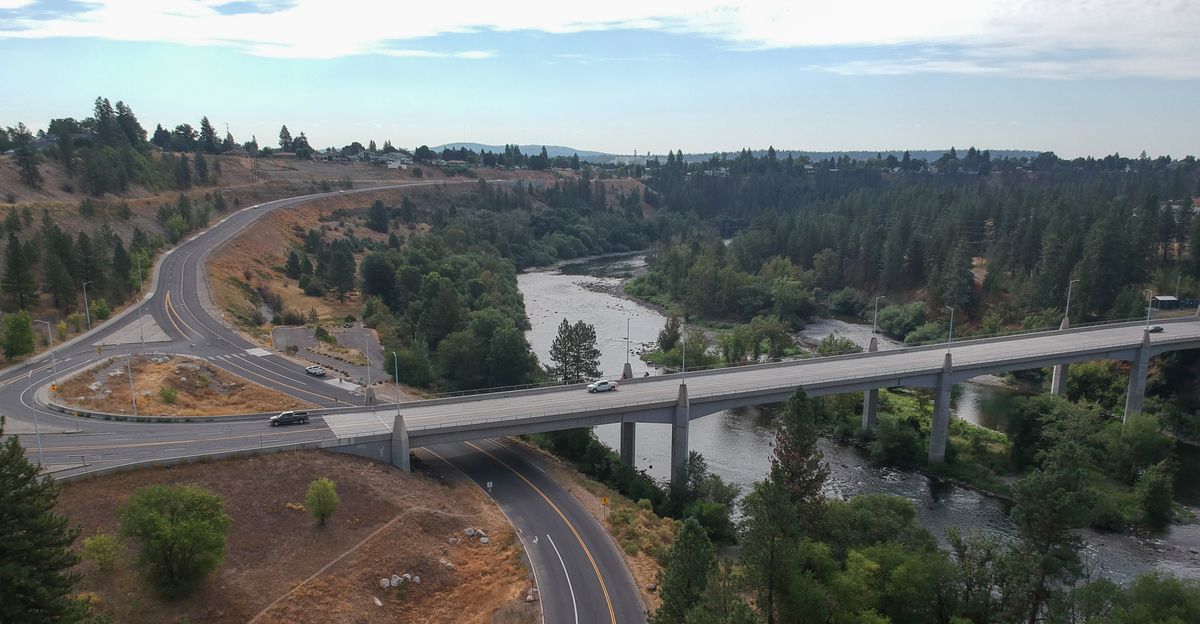This column reflects the opinion of the writer. Learn about the differences between a news story and an opinion column.
Then and Now: Downriver bridge
1930: The two-lane 1928 Downriver Bridge, also called the Downriver Park Bridge, (The Spokesman-Review photo archive)Buy a print of this photo
Throughout its history, Spokane has depended on bridges to span its eponymous river, moving people, vehicles and freight.
There were at least two bridges in the Downriver area as early as 1910. One was made of timber and rested on pilings left from an old railroad trestle. Another was made of two steel sections salvaged from an even older bridge, possibly one built by pioneer businessman James Monaghan in the 1860s, later owned by Joseph LaPray, approximately 20 miles downstream of Spokane.
Buggy and early automobile drivers said both crossings creaked and squeaked under loads.
As the spans deteriorated, load limits encroached on daily use until the city set aside $70,000 in 1927 to build a new bridge of arched concrete close to the Army fort.
That year, the Spokane Chronicle said that the city had already invested $1.6 million on modern concrete bridges and $204,200 in steel bridges.
The construction was held up because H.S. Stoolfire, president of Spokane Valley Power, hoped to build a hydroelectric dam at the Bowl and Pitcher rock formation. He was offering to pay for part of the bridge if it was built high enough to allow for high water levels. Stoolfire agreed to pitch in $25,000. The new concrete bridge opened in April 1928.
The bridge served the growing area west of downtown, but couldn’t handle the new traffic when Spokane Community College began developing the former Fort George Wright Army base into a new campus in 1967, just up the hill from the 1928 bridge. The new campus became a separate school called Spokane Falls Community College in 1970.
Starting in 1970, the Downriver bridge was rebuilt by the Max J. Kuney Company, saving the old supports and arches, and widening the two-lane deck into four lanes.
In 1966, the road that led down to the bridge from Northwest Boulevard was named for T.J. Meenach, a Spokane businessman who had served on the Park Board for many years, including some as president. In 1970, the bridge also took the name.
In 1987, the outer lanes of the aging bridge were blocked off because of structural weakness.
A new four-lane bridge was built just downstream in 1994.

